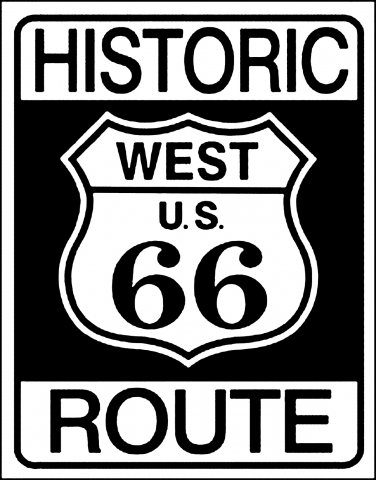
Historic Route 66
Route 66 … Why is this road so important to America?
Route 66 was a highway spawned by the demands of a rapidly changing America. The abbreviated route between Chicago and the Pacific coast traversed essentially flat prairie lands and enjoyed a more temperate climate than northern highways, which made it especially appealing to truckers.
In The Grapes of Wrath, John Steinbeck proclaimed U. S. Highway 66 the "Mother Road." An estimated 210,000 people migrated to California to escape the despair of the Dust Bowl. Route 66 symbolized the "road to opportunity."
After the war, thousands of soldiers, sailors, and airmen who received military training in California, Arizona, New Mexico, Oklahoma, and Texas abandoned the harsh winters of the north for the "barbecue culture" of the Southwest and the West. Again, for many, Route 66 facilitated their relocation. Store owners, motel managers, and gas station attendants recognized early on that even the poorest travelers required food, and adequate lodging. Route 66 and many points of interest along the way were familiar landmarks by the time a new generation of postwar motorists hit the road in the 1960's. It was during this period that the television series, "Route 66", starring Martin Milner and George Maharis drove into the living rooms of America every Thursday. Take the off ramp into a bygone era. Discover the 2,400 miles of Route 66 and see how America traveled in the 1920's-60's.
